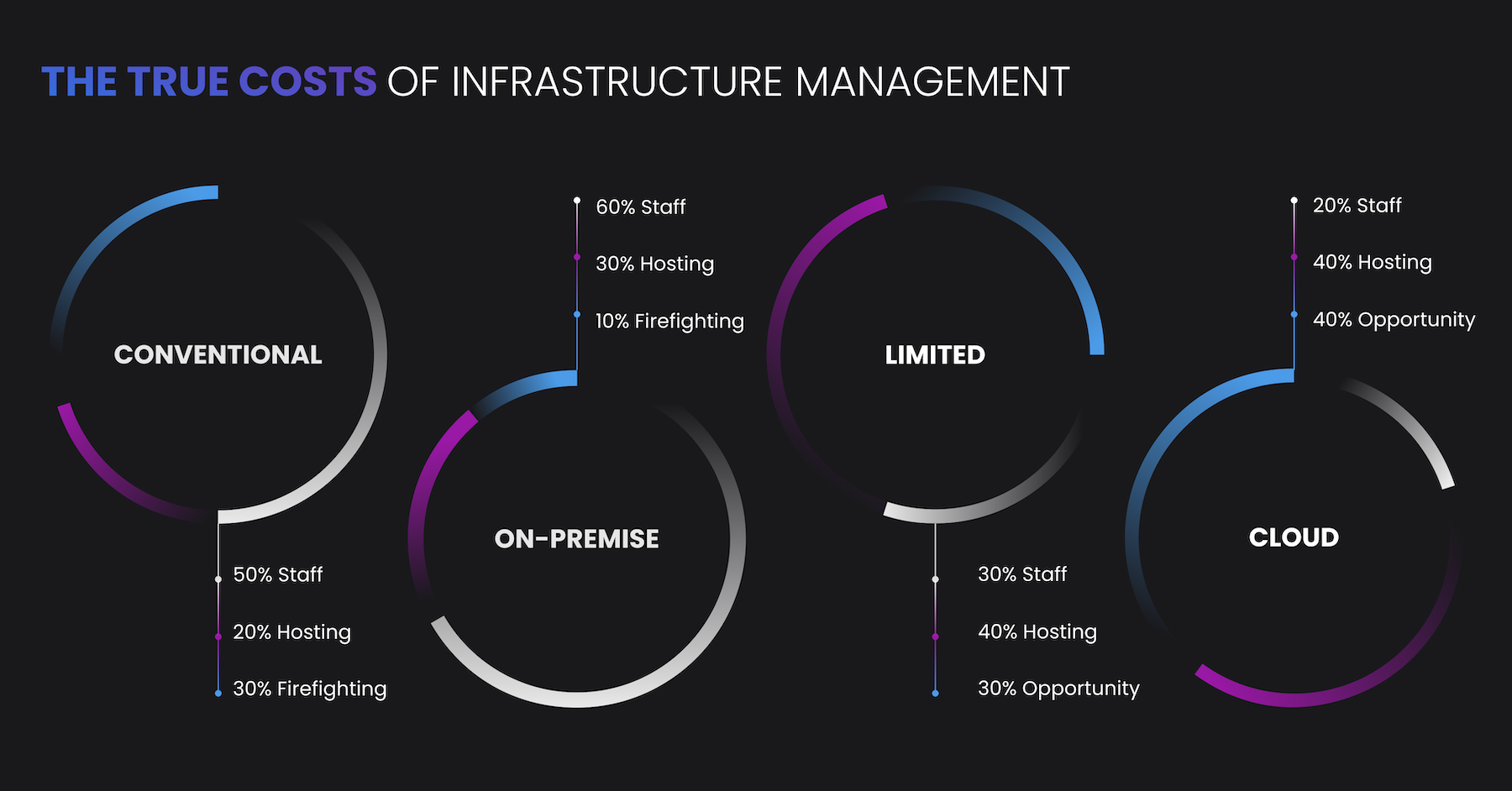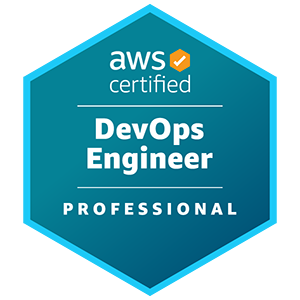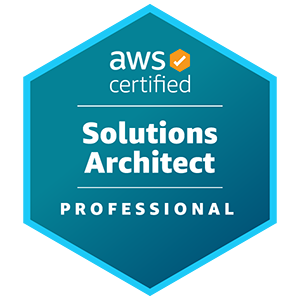The actual costs of infrastructure management

Why do businesses get nervous about using cloud services?
Cloud infrastructure changed businesses' operations, offering scalability, flexibility, and access to modern technologies and methodologies. However, transitioning to the cloud comes with its financial considerations, leading to a widespread debate about the actual cost of cloud infrastructure versus traditional on-premise solutions.
A common perception among businesses is that cloud infrastructure has higher costs. This belief develops from concerns over complex pricing models, underutilized resources, and operational expenses' unpredictability.
This article will discuss how cloud infrastructure can be more cost-effective in the long run compared to maintaining on-premise infrastructure when strategically managed through cloud-agnostic or multi-cloud approaches.
The budget distribution for on-premise, on-premise cloud, limited cloud and full cloud
After studying dozens of infrastructures and working with dozens of teams over many years, we came up with this conditional scheme:
- The Conventional Setup (On-Premise without Cloud)
50% of the budget is spent on Staff, 20% on Hosting, 30% is for Firefighting
In the conventional setup, the most significant chunk of the budget is spent on hiring and managing a high-performing team of DevOps engineers and other IT specialists who operate and maintain the system. Twenty percent of the budget, and sometimes even more, is spent physically housing the IT infrastructure. This includes the costs of the servers, data centers, electricity, or cooling systems. The remaining budget is spent on dealing with unexpected problems and challenges. These tasks are not planned and may pop up and cause system breakdowns or disruptions.
In the long run, much money goes into keeping the IT systems up and running instead of focusing on more strategic growth initiatives.
- On-Premise Cloud
60% of the budget is spent on Staff, 30% on Hosting, 10% on Firefighting
In the case of an on-premise setup with cloud components, we see that companies heavily rely on specialized employees to manage the infrastructures. Hosting costs increase by 10%, and as cloud technologies offer features like self-repair or workload distribution, only 10% of the budget is spent on unplanned and unexpected issues.
From Firefighting to Opportunity
Shifting to cloud models is the same as moving from reactive problem-solving to proactive strategic growth. Cloud computing provides flexibility and scalability, allowing businesses to adjust their resources quickly and efficiently in response to market demands and growth opportunities. They can significantly reduce the time, money, and human resources spent on maintaining and updating on-premise hardware and software.
- Limited Cloud
30% Staff, 40% Hosting, 30% Opportunity
A limited cloud model, which involves a partial transition to cloud services while maintaining some on-premise elements, presents a different cost dynamic. Some responsibilities are being shifted to cloud providers; here, only 30% of the budget is spent on Staff. 40% of the budget is spent on Hosting, which includes the combined costs of maintaining in-house infrastructure and paying for cloud services. The other 30% is dedicated to the opportunities clouds provide for growth and innovation, such as access to advanced technologies like artificial intelligence (AI), machine learning (ML), or Big Data Analytics.
- Full cloud
20% Staff, 40% Hosting, 40% Opportunity
In the full cloud model, where a company entirely shifts its operations to cloud services, the budget allocation dramatically changes; only 20% of the budget is dedicated to Staff, and hosting costs remain at 40% of the budget. The full cloud model enables companies to fully embrace cloud services' scalability, flexibility, and advanced technological capabilities, and a remarkable 40% of the budget is allocated to opportunity costs. By freeing up resources previously tied to maintaining and managing on-premise infrastructure, companies can allocate a significant portion of their budget toward new opportunities and driving innovation.
Concerns About Full Cloud Setup
Data Security and Privacy:
Fear of data breaches and unauthorized access in the cloud.
Vendor Lock-in:
Concerns about becoming too dependent on a single cloud provider.
Cost Uncertainty:
Worries about potential escalating costs due to variable pricing models.
Compliance and Regulatory Issues:
Challenges in meeting industry-specific regulations and standards in the cloud.
Technical Challenges:
Difficulties in migrating existing systems and applications to the cloud.
How Cloud Agnostic Tech Stack and Hybrid Cloud Solutions Help
If you want to build an infra that is easy to migrate from one environment to another and avoid vendor lock-in, the best approach is to make a cloud-agnostic tech stack, use libraries inside applications capable of multiple solutions, or choose multi-cloud setups.
Check out our upcoming articles and guides to learn more about Cloud Agnostic Tech Stack and Hybrid Cloud Solutions.
If you want a trusted team to ensure your smooth cloud migration, let's talk!
Open Source is a Philosophy
We understand that by collaborating with others in the community, we can create better technologies that have a positive impact on society.

Contact us
contracts@dasmeta.com
+49 30 16637857
Rheinsberger Str. 76/77 10115 Berlin Germany






